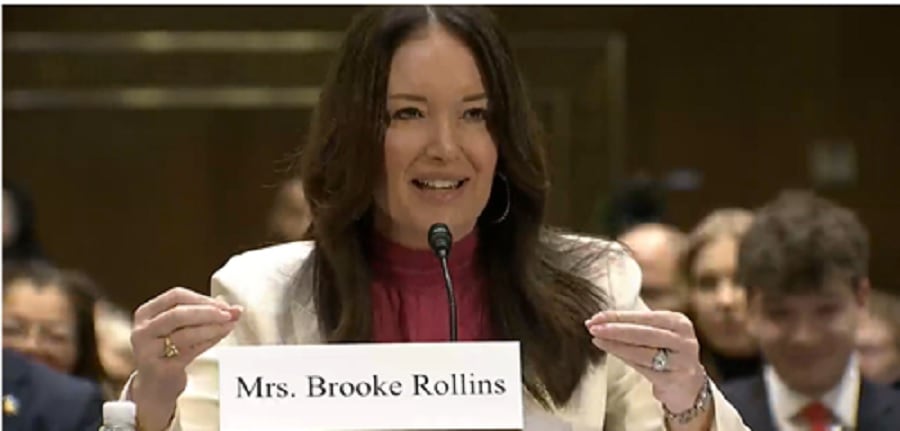USDA’s plan to relocate a majority of its Washington, DC-based workforce around the country and close key facilities in the region, announced yesterday, risks a “massive brain drain and significant loss of productivity,” cautions House Agriculture Committee Ranking Member Angie Craig.
Her sentiment is shared by several consumer advocacy groups that characterized the reorganization as an “assault on federal workforce,” and a “deliberate sabotage” that could hinder critical services, quality control and food safety.
USDA Secretary Brooke Rollins countered the agency is “bloated, expensive and unsustainable” and relocating agency workers will “bring USDA closer to the people it serves while also providing a more affordable cost of living for USDA employees.”
What is changing?
USDA says the reorganization centers on four pillars, including:
- Aligning workforce with available financial resources and agricultural priorities – USDA’s workforce increased about 8% and salaries increased by 14.5% in the last four years, according to Rollins, who noted in a memo that much of the growth was covered by temporary funding. She adds the Washington region has “one of the highest costs of living in the country” and relocating staff will save taxpayers money.
- Moving USDA staff closer to its customers – USDA plans to relocate more than half of the 4,600 positions currently in the Washington region to five hub locations, including Raleigh, NC; Kansas City, Mo.; Indianapolis, Ind.; Fort Collins, Colo.; and Salt Lake City, Utah. The agency’s goal is to keep no more than 2,000 employees in the Washington region. It also plans to close several area facilities.
- Eliminating management layers and bureaucracy – The agency will consolidate within the new hubs most stand-alone regional offices “and other similar bureaucratic management layers,” Rollins said in the memo. This includes reducing the Food and Nutrition Service regions from seven to five over the next two years. Animal and Plant Health Inspection Service centers will remain as is.
- Consolidating support functions – Services including civil rights functions, Freedom of Information Act and information management functions and legislative affairs will consolidate into single existing offices, among other changes.
Is a ‘brain drain’ imminent?
The announcement appeared to surprise Congressional leaders, including House Agriculture Committee Ranking Member Angie Craig, D-Minn., who criticized the move as “willfully risking the effectiveness of the agencies and programs the support America’s family farmers.”
She pointed to the botched relocation of USDA’s Economic Research Service and National Institute of Food and Agriculture outside of the Washington area to Kansas City, Mo., as a blueprint of the potential damage such a massive relocation could cause.
“When the first Trump administration relocated USDA’s Economic Research Service and National Institute of Food and Agriculture outside of the Washington, DC area, about 75 percent of employees impacted declined the move, resulting in a massive brain drain and significant loss of productivity at both agencies,” Craig said. “To expect different results for the rest of USDA is foolish and naive.”
The reorg adds insult to injury, consumer advocates argue
The impending change comes after roughly 15,000 people agreed to leave USDA so far this year, including nearly 4,000 who took the deferred resignation program offered January and about 11,300 who later agreed to leave.
“The US Department of Agriculture has already been decimated by DOGE and mass resignations,” and the new reorganization “continues the Trump administration’s assault on the federal workforce broadly and USDA in particular,” said Anupama Joshi, VP of programs at the Center for Science in the Public Interest.
“This ill-conceived reorganization plan does not align with a desire to make Americans healthy that the administration is touting; it will do just the opposite – it will make Americans hungrier and sicker,” he said.
How will the change impact WIC?
The relocation, on top of previous cuts, threatens central services that USDA provides, argues Georgia Machell, president and CEO of the National WIC Association.
The Women, Infant and Children federal program “provides essential nutrition and breastfeeding assistance to millions of mothers and young children,” and “relocating key staff and dismantling regional offices will sever decades of institutional knowledge, weaken quality control, delay critical services and create unnecessary barriers for state agencies and families who rely on WIC,” Machell argued.
“This reorganization is not about efficiency. It’s deliberate sabotage,” she added.
She advocated for Congress to “intervene to prevent harmful disruptions to federal nutrition programs” and “oppose these changes.”
House Agriculture Committee Ranking Member Craig echoed this call to action, asking the committee chairman to “hold a hearing on this issue as soon as possible to get answers.”
She lamented that USDA did not seek input from Congress before announcing the reorganization and said the committee needs “to hear from affected stakeholders and know what data and analysis USDA decisionmakers used to plan this reorganization.”




